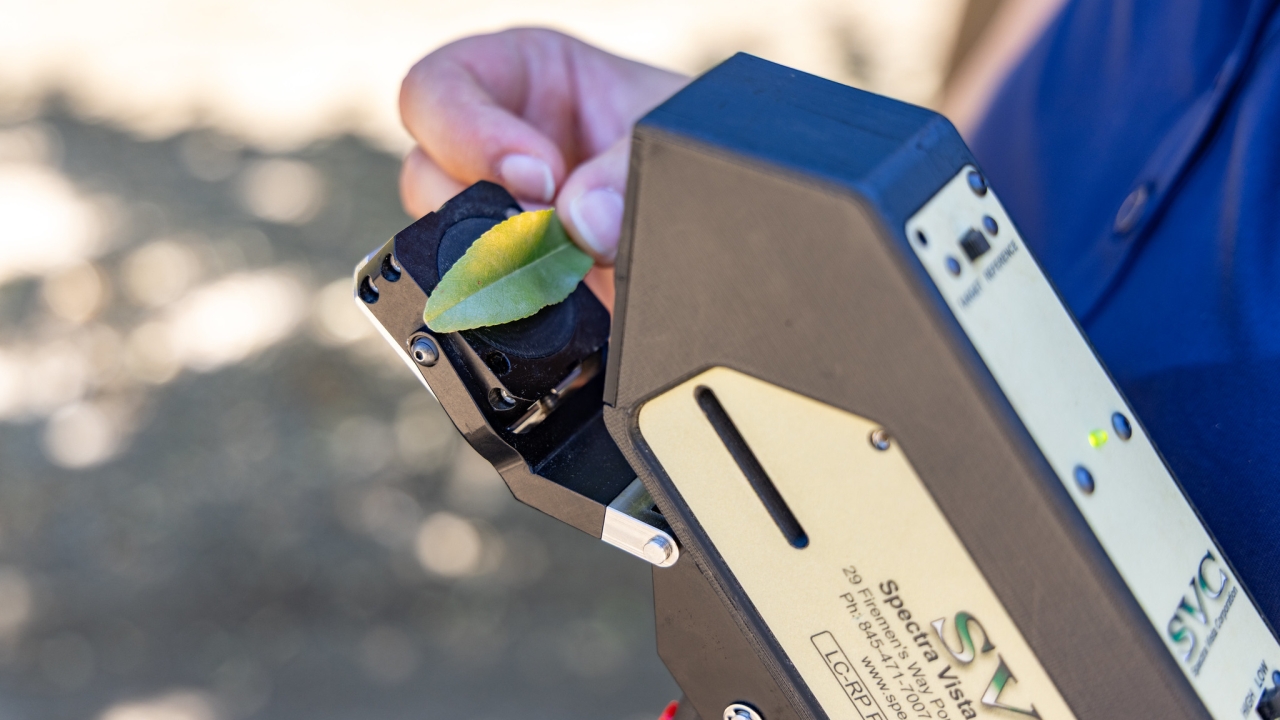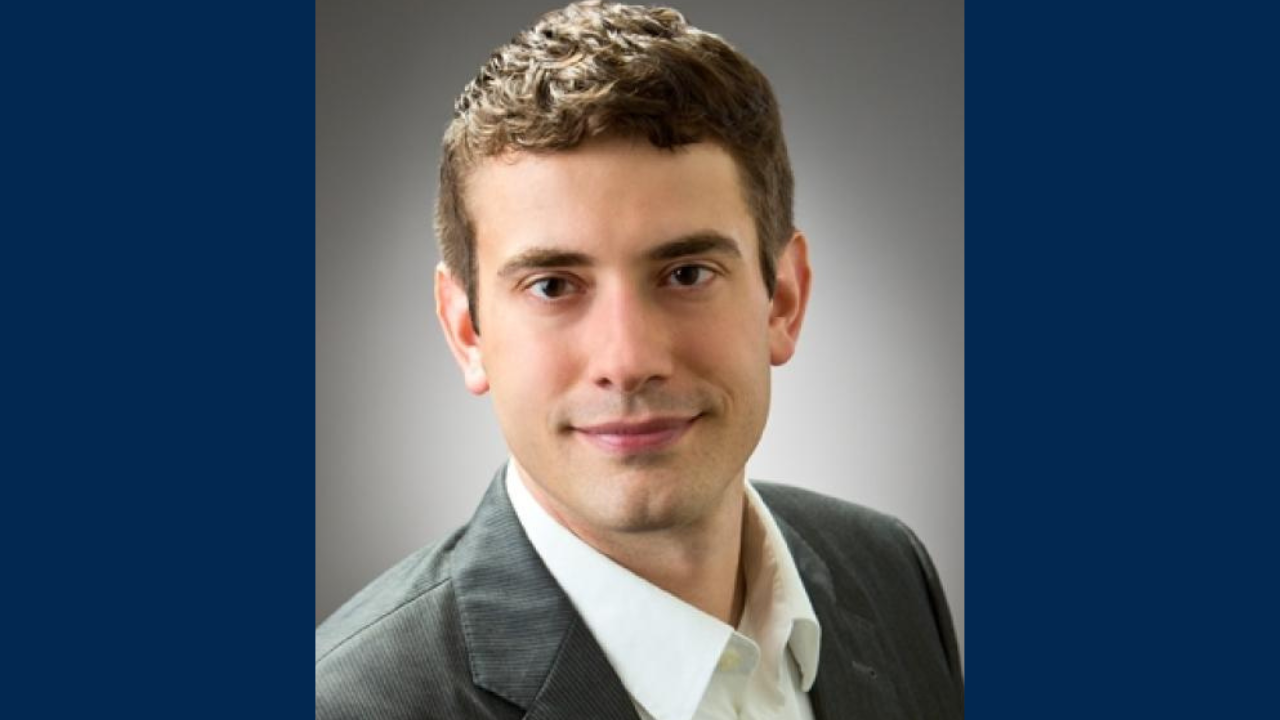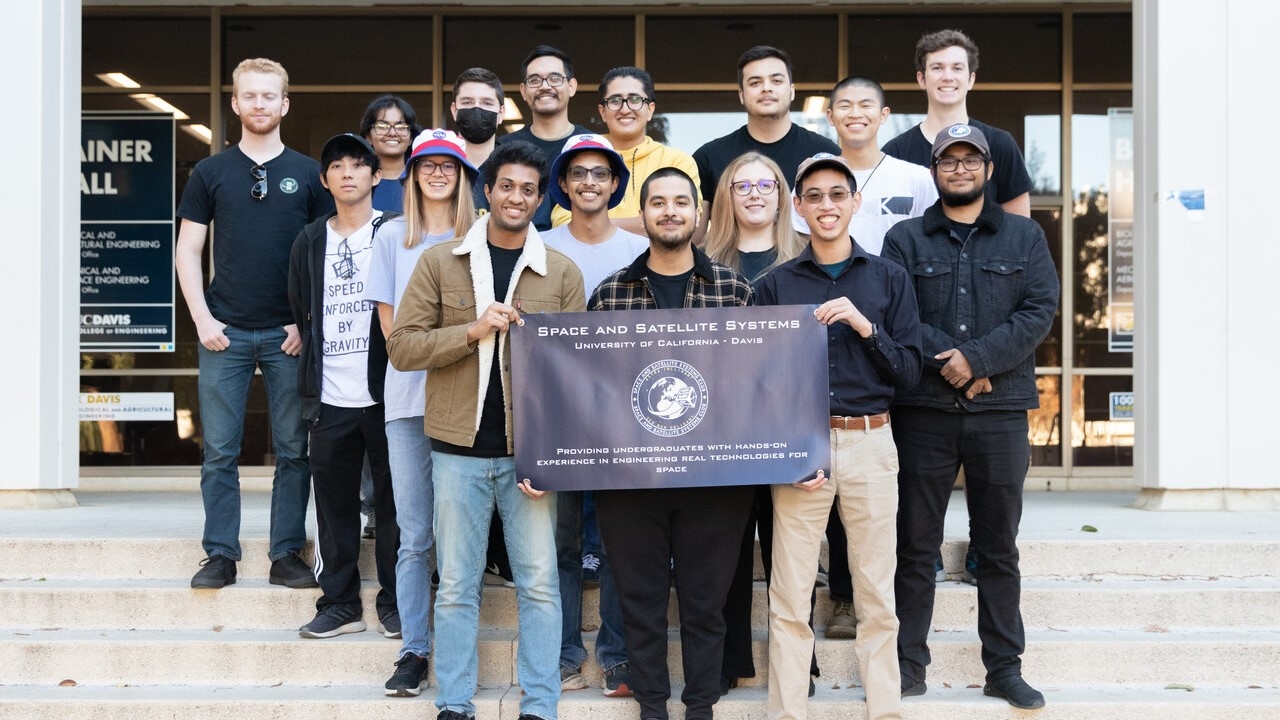
Space and Satellite Systems Club at UC Davis Reaches for the Stars
Group's First CubeSat Prepares to Launch in 2023
For the first time in 2023, UC Davis will literally be reaching the stars. After nearly six years and the contributions of more than 300 undergraduate students in the Space and Satellite Systems (SSS) Club at UC Davis, the university’s first student-built satellite will be going to space for proof-of-concept experiments as part of NASA’s CubeSat Launch Initiative.
The satellite—known as Remote Experimentation and Analysis of Low Orbit Phenomenon mission or REALOP 1—is a CubeSat, a tiny box-shaped research satellite equipped with cameras, antennae and sensors. If the team can successfully receive telemetry data from its homemade mounted reaction wheels and an image of Earth from space, they’ll know that all their hard work paid off.
“REALOP is the product of many people and many hours of work and I’m really excited that we’re finally going to be able to launch it,” said club co-president and aerospace engineering major Aashay Vartak.
“I’m very excited to see something we all worked on going to space,” said former electrical and attitude determination control system (ADCS) team lead Varsha Senthil ’22. “That’s pretty wild.”
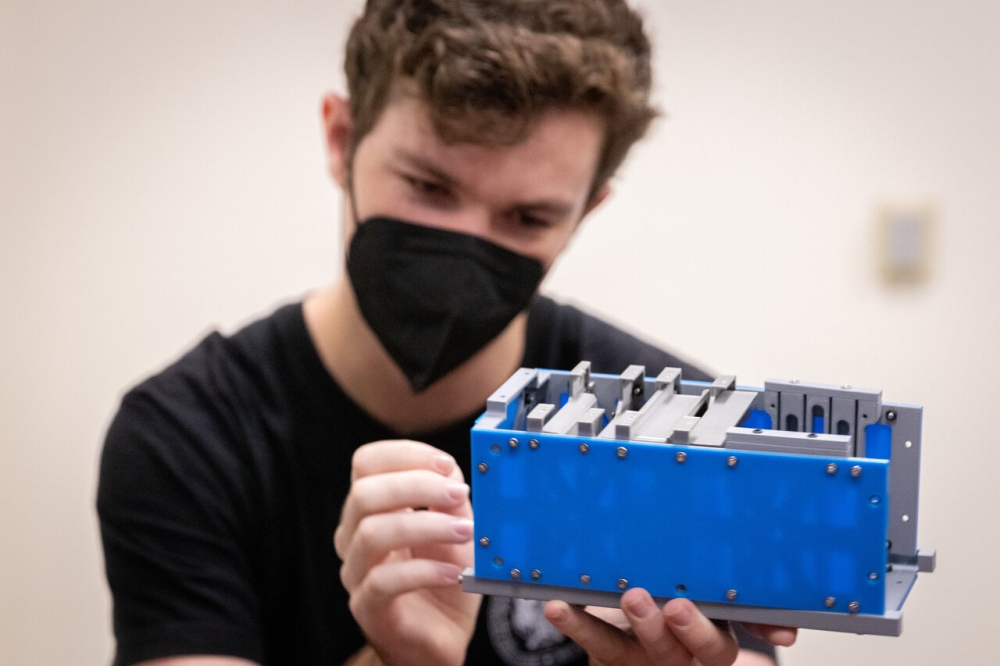
A Satellite from Scratch
Due to their size, CubeSats are cheaper and easier to launch into space, which makes them popular among university design groups. However, buying commercial parts to build a CubeSat can be incredibly expensive and cost-prohibitive, so the SSS team opted to design, manufacture and build every component from scratch.
“We are trying to develop technologies that other universities can use, so one of our main objectives was to make sure everything is affordable and show that this is possible,” said Vartak.
The most crucial piece is the team’s hard disk drive mounted reaction wheels (MRWs). MRWs stabilize and orient CubeSats in space by spinning and transferring momentum to turn the satellite or slow its rotation, but traditional MRWs are expensive and difficult to manufacture reliably. Former SSS sub-team leads and current UC Davis Mechanical and Aerospace Engineering M.S. students Abhay Negi ’20 and Kylie Cooper ’20 realized that with modification, common hard disk drives from phones and computers might be a lower-cost alternative.
“The MRW is basically a wheel that spins really fast, and a hard disk drive also spins really fast, so why can’t they both do the same thing?” asked project manager Jordan Wong. “Many university clubs cannot purchase a normal MRW one without it being a major financial risk, so our mission is to see if we can use hard disk drives as an effective substitute.”
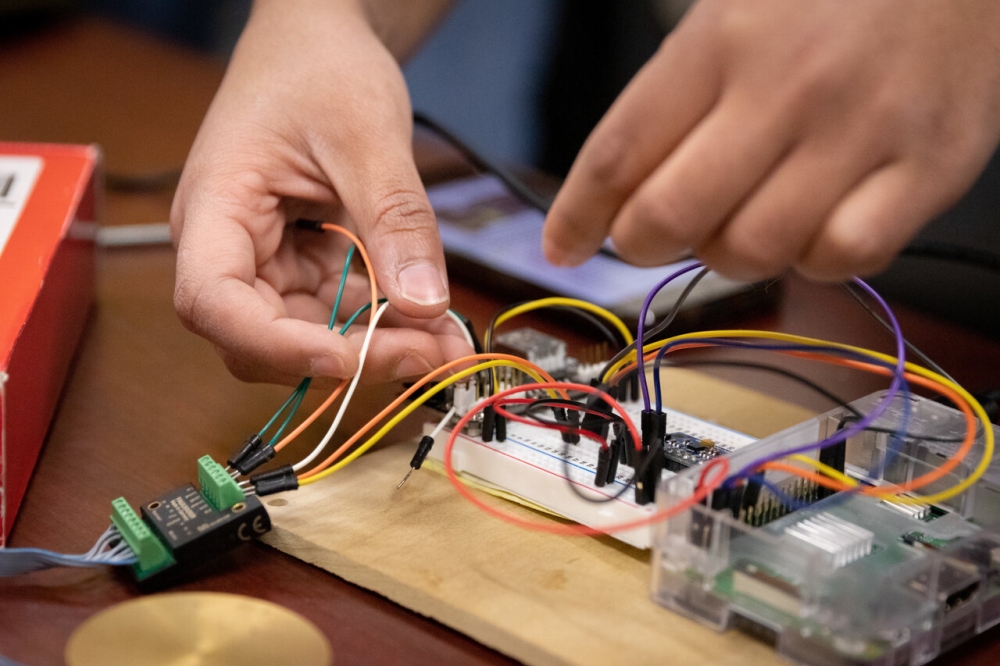
To test the hard disk drives in space, the team mounted two different cameras on their CubeSat. If REALOP 1 can correctly orient itself and take a picture of the Earth, then the team knows their technology worked and it would pave the way to making CubeSat design more accessible.
All For (REALOP) One
Building a CubeSat from the ground up is a challenge, but Wong says it also creates a spirit of camaraderie that keeps the team motivated even during the most frustrating tests.
“We’re all in it together,” he said. “It’s working towards something bigger than yourself.”
The team also benefits from its five diverse sub-teams—structures, electrical, ADCS (how the satellite is oriented in space), software and communications—comprised of undergraduate students from across the College of Engineering, physics, neurobiology and mathematics. Though the five sub-teams work relatively independently, anyone from any sub-team can attend another sub-team’s meetings to learn more or to collaborate.
Senthil also lauds the team’s mentorship opportunities. When she joined the team as an inexperienced first-year student, her more senior teammates taught her how to design and build circuit boards long before she ever learned it in class. She says that early hands-on experience has been instrumental both in her classes and in finding internships and jobs.
“There are definitely times when I have no clue what’s going on, but someone’s there to help you out or work with you on it and we’ll fix It together and you learn a lot,” she said. “It was really cool to learn new things on the technical side, but I also made a lot of good friends.”
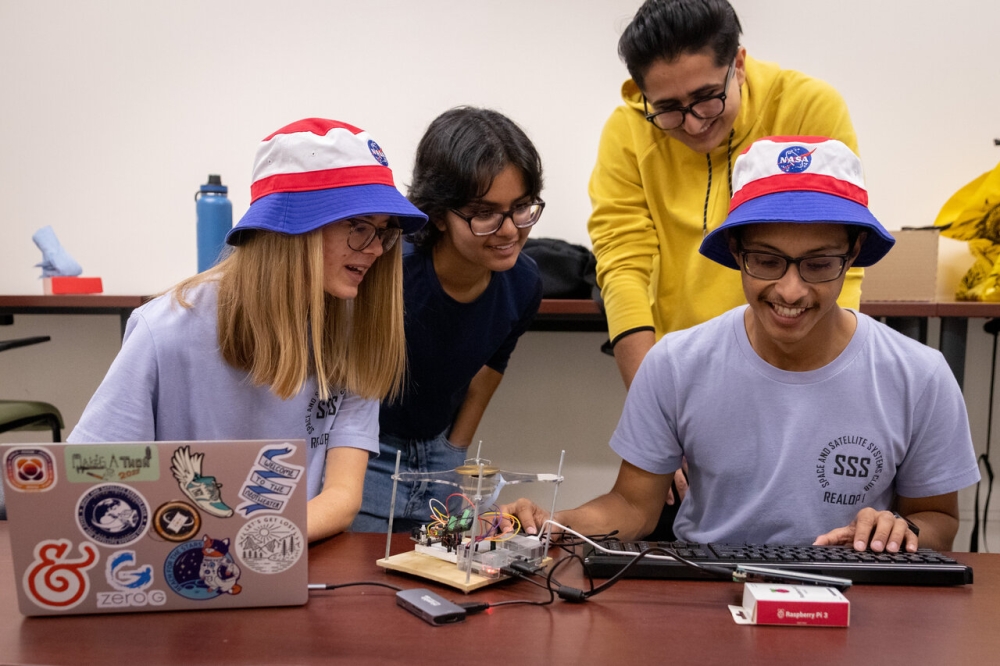
This is especially important as the CubeSat reaches its final stages of manufacturing and laying all the components out in a flat space before assembly. The team is constructing two models: the flight model, which they will send to NASA, and the engineering model—a prototype the team can “beat the crap out of to see if it breaks,” says Wong. Any issues found with the engineering model they will then fix before sending the flight model to NASA.
REALOP 1 is scheduled to launch early next year. As one mission approaches its end, the team is already planning its follow-ups, REALOP 2 and 3. The two missions are still tentative, but the team looks forward to seeing what the club can do next once it has its first satellite under its belt.
“We feel like once REALOP 1 is a success, we can move on to ambitious missions now that we proved that we can do this,” said Vartak.

